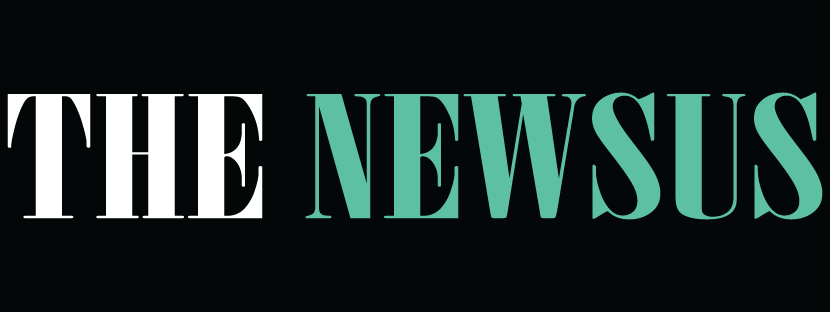Top HR Tools Every Growing Business Should Use in 2025
As businesses grow, the role of Human Resources (HR) shifts from being purely administrative to becoming a strategic driver of...

As businesses grow, the role of Human Resources (HR) shifts from being purely administrative to becoming a strategic driver of organizational success. In 2025, companies must navigate hybrid workplaces, skills shortages, competitive hiring markets, and increasing expectations for employee experience. To handle these challenges effectively, businesses need reliable HR tools that improve efficiency, strengthen culture, and empower employee development.
HR tools are no longer a luxury — they are a necessity for scaling. The right tools help automate processes, support data-based decision-making, and enhance overall employee engagement. In this article, we will explore the top HR tools every growing business should use in 2025, why they matter, and how to select solutions that align with your company’s stage and goals.
Why HR Tools Are Essential for Growing Businesses
When a business is small, HR processes may begin with spreadsheets, shared folders, and email-based communication. But as the headcount increases, these manual systems quickly become inefficient. Mistakes multiply, compliance becomes harder, and HR teams get overloaded with repetitive work.
Here’s why HR tools are essential:
1. Efficiency and Automation
HR platforms automate manual tasks like payroll processing, scheduling interviews, and managing leave requests. This saves HR teams hours of work weekly.
2. Improved Employee Experience
Employees expect clarity in communication, transparency in performance expectations, and easy access to HR information. Tools provide self-service features that support this experience.
3. Better Compliance
Businesses scaling across cities, countries, or remote environments must comply with local regulations. HR systems help maintain accurate records and reduce legal risk.
4. Data-Driven Insights
Modern HR tools offer HR analytics dashboards that help leaders identify patterns in turnover, performance, absenteeism, hiring success, and more.
Top HR Tools Every Growing Business Should Use in 2025
Below are the core categories of HR tools essential for a growing business, along with what each type does and how it contributes to growth.
1. HRIS / HRMS (Human Resource Information System)
An HRIS is the central system that stores all employee records, tracks employment history, manages benefits, and supports organizational workflows. It is the foundation of your HR tech stack.
Key Functions:
- Central employee database
- Employee self-service portal
- Leave and attendance tracking
- HR workflow management
- Reporting and dashboards
Why It Matters:
An HRIS reduces paperwork, organizes data, and ensures HR teams have a single source of truth. As your business grows, this system becomes critical for ensuring consistency and accuracy.
What to Look For:
- User-friendly interface
- Integration options with payroll, recruiting, learning, etc.
- Role-based access and security
- Scalable pricing as your team grows
2. Applicant Tracking System (ATS)
Recruitment becomes more complex as the company grows. An ATS automates and tracks the hiring process from job posting to final selection.
Key Functions:
- Job posting and distribution
- Resume screening
- Interview scheduling
- Feedback and evaluation tools
- Hiring pipeline analytics
Why It Matters:
Hiring quickly and accurately is essential to business growth. An ATS ensures candidates receive a positive experience and makes hiring managers more efficient.
What to Look For:
- Ability to post to multiple platforms
- Collaborative review tools for hiring teams
- Clear candidate progress pipelines
- Automated messaging and scheduling
3. Employee Onboarding Software
First impressions shape employee loyalty and performance. Onboarding tools help new employees integrate smoothly into the team and understand expectations.
Key Functions:
- Digital welcome packets
- Task checklists (for HR, managers, and new hires)
- E-signatures for documents
- Orientation and training scheduling
Why It Matters:
Effective onboarding improves productivity, engagement, and reduces early turnover.
What to Look For:
- Customizable workflows
- Easy document management
- Integration with HRIS and IT provisioning tools
4. Performance Management Tools
Modern organizations are shifting from yearly performance reviews to continuous performance tracking. Performance management tools support goals, feedback, and development conversations.
Key Functions:
- Goal and OKR tracking
- Performance evaluations
- Continuous feedback loops
- Employee development plans
Why It Matters:
Employees perform best when expectations are clear and feedback is timely.
What to Look For:
- Easy-to-use interface for managers
- 360° review options
- Integration with learning and compensation tools
5. Employee Engagement & Feedback Platforms
Engagement tools help organizations monitor morale, identify issues early, and strengthen culture.
Key Functions:
- Pulse surveys
- Recognition and rewards
- Sentiment analytics
- Employee community platforms
Why It Matters:
Engaged employees stay longer, perform better, and contribute positively to workplace culture.
What to Look For:
- Anonymous feedback options
- User-friendly survey creation
- Reports that highlight trends and problem areas
6. Payroll and Benefits Management Systems
Payroll errors can damage trust and legal compliance. A strong payroll tool ensures accuracy and timeliness, while benefits tools help employees make informed decisions.
Key Functions:
- Salary and wage calculations
- Tax and deduction automation
- Benefits enrollment and tracking
- Payslip and financial reporting
Why It Matters:
Smooth payroll builds employee confidence and keeps financial operations legally compliant.
What to Look For:
- Multi-location tax support
- Integration with HRIS
- Automatic compliance updates
7. Learning and Development Platforms (LMS)
Employees expect ongoing opportunities to grow. Learning platforms provide training modules, skill development paths, and certification tracking.
Key Functions:
- Online training courses
- Skill-based development plans
- Assessments and micro-learning features
- Certification records
Why It Matters:
Companies that invest in development reduce turnover and build future leadership internally.
What to Look For:
- Mobile-friendly access
- Ability to create custom courses
- Training analytics to track progress
8. HR Analytics and Workforce Planning Tools
As HR grows into a strategic function, analytics tools help leaders make informed decisions about talent strategy.
Key Functions:
- Turnover trend analysis
- Hiring and performance insights
- Productivity measurement
- Future workforce forecasting
Why It Matters:
Data-driven HR allows a company to anticipate challenges rather than react to them.
What to Look For:
- Visual dashboards
- Predictive analytics
- Integration with existing HR tools
How to Choose the Right HR Tools
Selecting HR tools depends on your organization’s size, budget, and strategic direction. Here are key considerations:
| Selection Factor | What to Consider |
|---|---|
| Scalability | Choose tools that grow with your team. |
| Ease of Use | Tools must be intuitive or adoption will fail. |
| Integration | Ensure systems connect to avoid duplication. |
| Cost vs Value | Consider total ROI, not just subscription fees. |
| Support & Training | Vendor support quality matters long term. |
Conclusion
The year 2025 demands a smarter approach to HR. With remote teams, evolving employee expectations, and increasing competition for talent, HR tools are essential to keeping your organization efficient, compliant, and people-centered. By investing in systems like HRIS, ATS, performance management platforms, learning solutions, and workforce analytics, growing businesses can build a strong foundation for long-term success.




